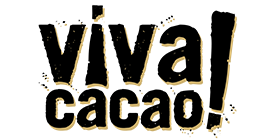
Behind every chocolate bar is a long supply chain. But not all cacao is sourced the same way—and the difference matters more than ever.
At Viva Cacao, we’re committed to transparent cacao sourcing that honors both quality and the people behind the beans. With rising commodity prices and pressure from mass buyers flooding the market, our sourcing model is an intentional stand for sustainability and long-term relationships.
Here’s a look at how chocolate companies source cacao—and why we’ve chosen a different path.
Two Models, Two Mindsets
Model 1: The Conventional Supply Chain
Grower → Local Buyer → Exporter → Importer → Chocolate Company
This system is designed for efficiency and volume. But along the way, something gets lost—transparency, quality, and often, fairness.
What this model looks like:
- Farmers sell wet cacao to local buyers for fast cash.
- Fermentation and drying are sometimes skipped altogether.
- Beans are sold up the chain with little traceability or concern for quality.
- Each step adds cost but not necessarily value.
In today’s market, big chocolate companies are offering top prices for any cacao they can get, even unfermented beans. For farmers, this is tempting—and understandably so. But there’s a hidden cost.
Model 2: The Viva Cacao Approach
Farmer or Cooperative → Exporter → Viva Cacao
Our model is built on transparency, long-term relationships, and mutual commitment to quality. We work directly with farmers or cooperatives who handle fermentation and drying themselves—and partner with an exporter who helps maintain those relationships and high standards.
Here’s what makes our model different:
- Fewer middlemen = more traceability and more value returned to the source.
- Exporters like Cacaolife are partners in quality, not just logistics.
- We know the names, practices, and stories behind our beans.
- Our pricing reflects skill, effort, and the true cost of sustainable cacao.
This is what we mean by Transparent Trade—a model where each step is visible, accountable, and fair.
Why Now: What the Market Isn’t Telling You
Cacao prices are spiking. Supply is shrinking. And buyers—especially large ones—are flooding the market to secure as much cacao as possible, as fast as possible.
In some regions, farmers are selling everything to these buyers, even skipping fermentation because the volume-based price is so high. That may seem like a win, but here’s the risk:
When prices fall (and they will), those buyers will disappear.
What’s left? Farmers with no premium buyers, no fermentation skills, and no pathway back into the craft chocolate market.
We're already seeing this happen. During our recent origin visit, many co-ops had no cacao to offer, because it had all been sold—possibly unfermented—to large buyers. While it’s great that farmers are earning more, this short-term market shift threatens the long-term survival of high-quality, traceable cacao.
In our model, exporters aren’t just logistics partners—they’re boots on the ground.
They’re essential for:
- Helping farmers ferment and dry beans properly
- Monitoring consistency and quality
- Providing market education
- Ensuring fair and stable pricing
As a small company, we don’t have the resources to always be at origin, monitoring quality in real-time. That’s where partners like Cacaolife come in. Their regular visits to farms, interactions with co-ops, and dedication to understanding the challenges at origin allow us to bridge the gap.
While some larger companies can boast about being directly involved due to their significant resources, we rely on these trusted partnerships to build meaningful relationships and maintain the delicate balance between what farmers need and what the craft chocolate world values.
Cacaolife’s involvement helps us stay connected to what’s really happening at origin and empowers us to be better partners in the process.
Why Fermentation Matters
But some buyers are paying high prices for unfermented beans, just to secure volume. That breaks the incentive loop for quality.
When fermentation disappears from the supply chain, so does flavor, consistency, and trust.
That’s why we only work with beans that are meticulously fermented and dried, whether it’s a single farm like our beans from Puira—or a co-op that’s been trained and supported to uphold high standards.
What You're Really Paying For
Every bar of chocolate has a story. When you buy from brands committed to transparent cacao sourcing, you're supporting:
- Farmers who ferment, dry, and deliver cacao with care
- Exporters who add value, not just cost
- A system that pays for quality, not just volume
- A supply chain built on trust, not transactions
The Consumer's Role
We’re not chasing trends—we’re building trust.
Our sourcing model isn’t perfect, but it’s intentional, transparent, and rooted in long-term relationships. We’re not trying to cut every cost—we’re trying to invest in every connection.
Because truly good chocolate begins long before the bar is wrapped.
We believe in chocolate with integrity—from bean to bar.
If you do too, help us shape a more transparent, sustainable cacao future.
